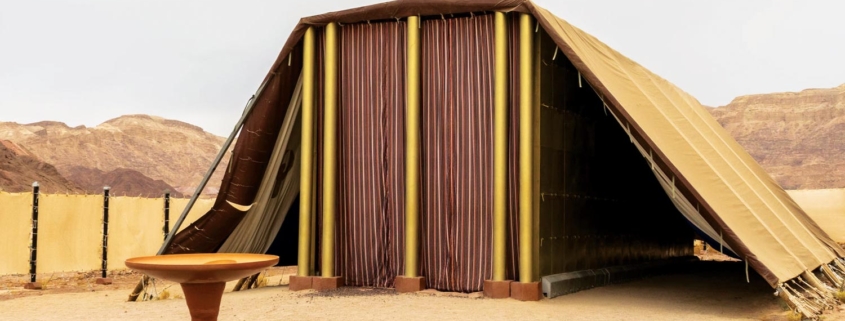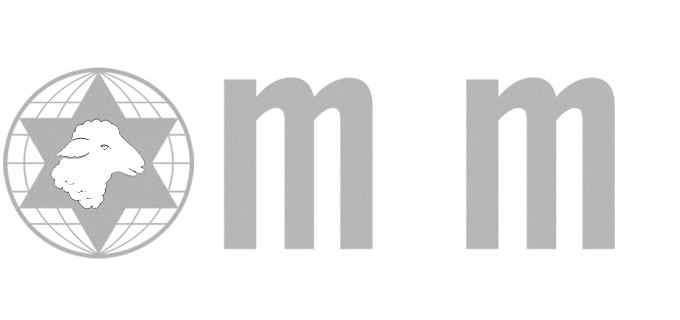God of Atonement, Pt. 1
What Is the Good News of Yeshua? (Part 13)
The Creator of the universe had made His choice: humanity’s national facilitator of reconciliation would be the groaning, ungrateful, stiff-necked people of Israel. In fulfillment of His covenant with the patriarchs, the God of Abraham, Isaac and Jacob had delivered His holy people through astonishing feats of power, and given them His commands of love with the sobering assurance of either abundant mercy or glorious wrath. In terrifying displays of authority, the God of Commandments—through His faithful law-giver Moses—made clear Israel’s objective and definition as a distinctive treasure among all the nations. As His priestly servant and mediator, God required Israel’s faithful submission and obedience to His word. But for the people of Israel to fulfill their uniquely ordained mission of helping to save the world, they first needed to be shown the method and the means of dealing with their own sin, and to find the way of righteousness that would accomplish their own reconciliation.
With the fledgling nation’s literal and figurative journey still before them, for more than half a year the principal communal activity centered on the holy construction of the Tent of Meeting and the subsequent establishment of Israel’s picture of purpose: the priesthood. What God had designed—and the people implemented—would not merely be a sanctified space served by a specialized society within Israel, but the physical representation of Israel’s collective, heavenly occupation on behalf of the entire world. The gloriousness of the Tent and eminence of the priesthood would reflect the weight and substance of Israel’s whole reason for being.
Despite the plethora of rigid commands to which God demanded Israel’s absolute adherence, where it came to the construction of the Tent of Meeting, He would require no such compliance, but rather the community’s freewill involvement. Being made with the voluntary contributions “from every man whose heart impels him” (Exodus 25:2), this sacred housing was to be built for Him using only the most skilled craftsmen, fashioned and furnished using the most precious of metals, colored materials, skins, woods, spices and stones—illustrious and worthy elements of “an example and shadow of the heavenly…, greater and more perfect [tent]” (Hebrews 8:5, 9:11). It would contain the golden-overlaid wooden chest for storing the tablets of the testimony, and from above its angelic cover, God would speak with Moses, giving him His commands to announce to His set-apart people (Exodus 25:10ff). The furnishings of that most holy place included its golden table, plates, dishes and bowls (25:23ff), and its seven-branched pure gold lampstand, fueled by the refined oil of olives (25:31, 27:20). The holy tent would encompass God’s meeting-place—an enclosure of colorful, embroidered curtains and skins set upon tall, wooden frames—along with its sacrificial altar and equipment, fully surrounded by a courtyard the length and breadth of tens of men. And like the tent, the priests themselves would be arrayed in the specially spun fine linen clothes for wearing in His presence, with the high priest dressed in the apron bearing the stone-engraved names of Israel’s tribes, the breastplate of gem stones representing each of those twelve, the blue cloth robe with terminating bells and woven pomegranates, the fine linen turban with the golden forehead-plate engraved with “Holy to Adonai,” the fine linen tunic under the apron, and the embroidered sash around the waist—a custom set of clothing all the way down to the sacred, linen undergarments. This intersection between the temporal and eternal—depicting Israel’s national, salvific purpose—would become the extravagant setting of God’s magnificent, unspoiled space both for meeting with humanity, and for His chosen priesthood to perform their conciliatory, covenant-sustaining work.
It was within this sublime atmosphere that the priestly line, descended from Moses’ brother, would assume their anointed office and receive their appointed place within the community. Performing a myriad of functions, such as adjudicating legal matters and overseeing ritual purification, their primary purpose as intermediaries between Israel and her God would be fulfilled through the administration of the sacrificial system. Because Israel had now received the righteous regulations of the Torah, any violation of God’s distinctions between right and wrong would be afforded “an opportunity through the command” (Romans 7:8) beyond all previous offenses. The commands codified not only God’s particular instructions for His set-apart people, but an unambiguous knowledge—both generally and specifically—of what God considers sin. The sacrificial system was included within these commands in order to deal with the inevitable and habitual problem of Israel’s missteps…
Because sin—that ancient separator between God and man—still required a remedy.
Did this post bless you?
♥
In order to satisfy the covenantal requirements under which God could legally forgive the violation of His word, the God of Commandments provided the long-awaited mechanism for making peace and bringing reconciliation with the sons of Adam. For Israel, that mechanism would be realized through the people’s sacrificial offerings—personal possessions paid as compensation for committing sins and for being sinful. By bringing their offerings to the unapproachable God by way of His approachable priests, God, in turn, would forgive the people, make them clean, and cover over the stain of their sin—He would grant them atonement.
What do you think? Share your thoughts in the comments below!







Leave a Reply
Want to join the discussion?Feel free to contribute!